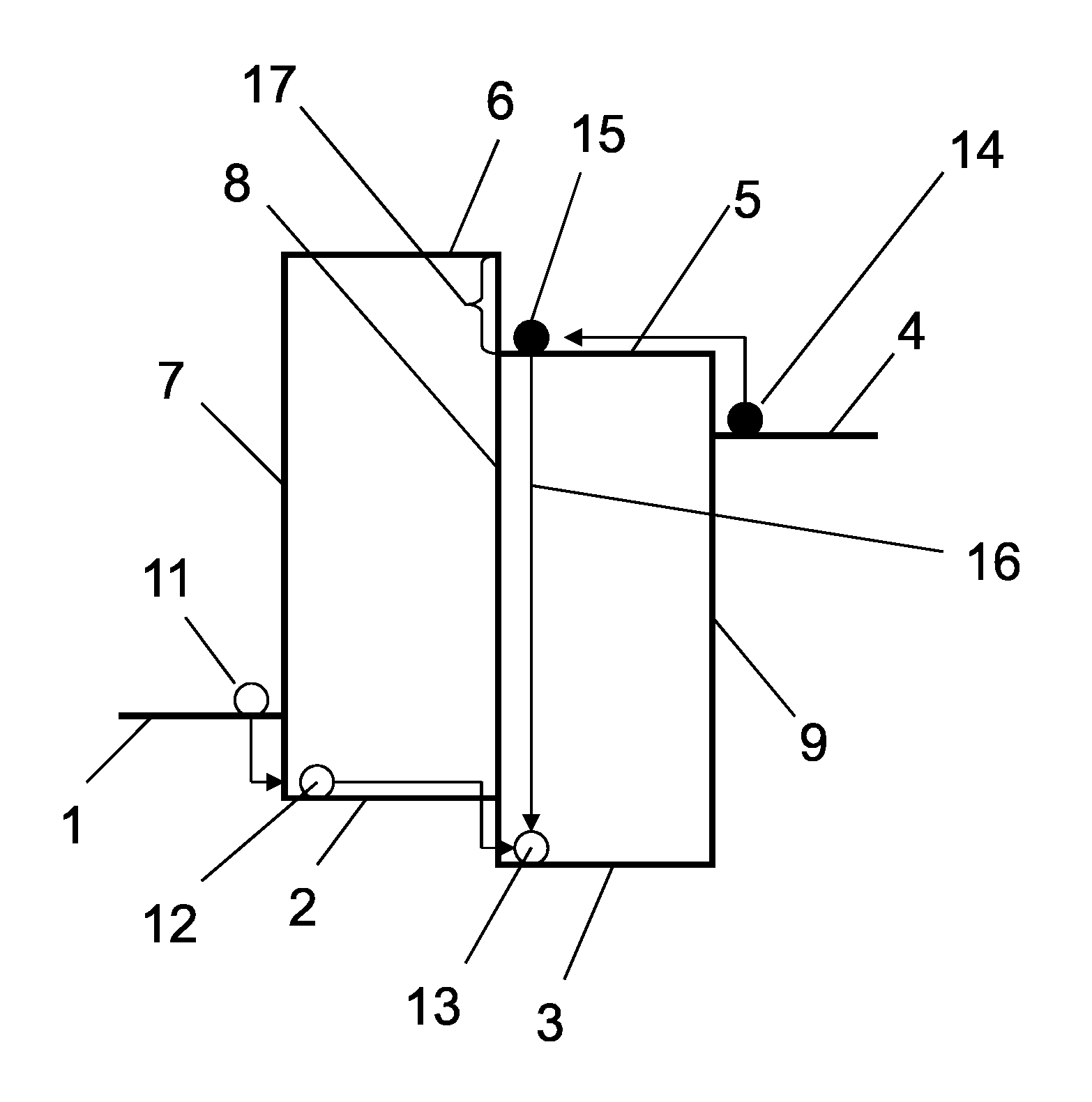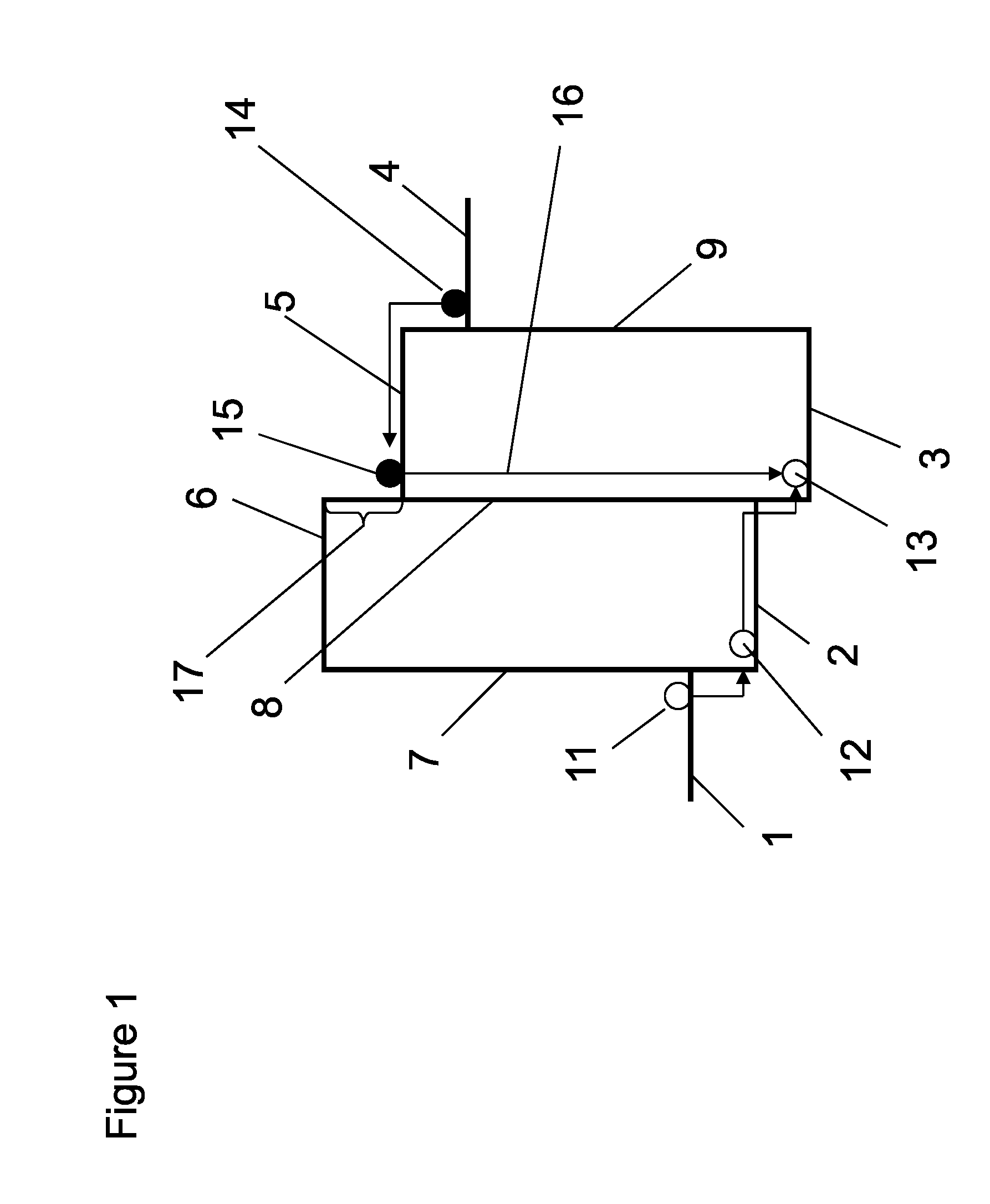Light emitting element
a technology of light-emitting elements and light-emitting components, which is applied in the direction of organic chemistry, solid-state devices, thermoelectric devices, etc., to achieve the effect of sufficient durability life and high light-emitting efficiency
- Summary
- Abstract
- Description
- Claims
- Application Information
AI Technical Summary
Benefits of technology
Problems solved by technology
Method used
Image
Examples
example 1
[0092]A glass substrate with 165 nm of an ITO transparent conductive film deposited (produced by Geomatec Co., Ltd., 11Ω / □, sputtered product) was cut to 38×46 mm, and etched. The obtained substrate was ultrasonically washed with “SEMICO CLEAN 56” (trade name, produced by Furuuchi Chemical Corporation) for 15 minutes, and washed with ultrapure water. The substrate was treated with UV-ozone for 1 hour immediately before the element was produced, and installed in a vacuum deposition apparatus. The air in the apparatus was exhausted to achieve a vacuum degree of 5×104 Pa or less in the apparatus. A resistance heating method was used to vapor-deposit compound [1] as a hole transport layer by 60 nm. Then, using compound (H-1) as a host material and compound (D-1) as a dopant material, a light-emitting layer was vapor-deposited to achieve a dopant material doping concentration of 5 wt % and to have a thickness of 40 nm. Subsequently using compound (E-1) as an electron transport material a...
examples 2 to 8
[0094]Light-emitting elements were produced and evaluated as described in Example 1, except that the materials shown in Table 1 were used as a hole transport layer, light-emitting layer host material, light-emitting layer dopant material and second electron transport layer. The results of the respective examples are shown in Table 1. Meanwhile, compound (E-2) is the following compound.
example 7
[0095]A glass substrate with 165 nm of an ITO transparent conductive film deposited (produced by Geomatec Co., Ltd., 11Ω / □, sputtered product) was cut to 38×46 mm, and etched. The obtained substrate was ultrasonically washed with “SEMICO CLEAN 56” (trade name, produced by Furuuchi Chemical Corporation) for 15 minutes, and washed with ultrapure water. The substrate was treated with UV-ozone for 1 hour immediately before the element was produced, and installed in a vacuum deposition apparatus. The air in the apparatus was exhausted to achieve a vacuum degree of 5×10−4 Pa or less in the apparatus. A resistance heating method was used to vapor-deposit compound [1] as a hole transport layer by 60 nm. Then, using compound (H-1) as a host material and compound (D-1) as a dopant material, a light-emitting layer was vapor-deposited to achieve a dopant material doping concentration of 5 wt % and to have a thickness of 40 nm. Subsequently E-2 was vapor-deposited as a first electron transport l...
PUM
 Login to View More
Login to View More Abstract
Description
Claims
Application Information
 Login to View More
Login to View More - R&D
- Intellectual Property
- Life Sciences
- Materials
- Tech Scout
- Unparalleled Data Quality
- Higher Quality Content
- 60% Fewer Hallucinations
Browse by: Latest US Patents, China's latest patents, Technical Efficacy Thesaurus, Application Domain, Technology Topic, Popular Technical Reports.
© 2025 PatSnap. All rights reserved.Legal|Privacy policy|Modern Slavery Act Transparency Statement|Sitemap|About US| Contact US: help@patsnap.com



